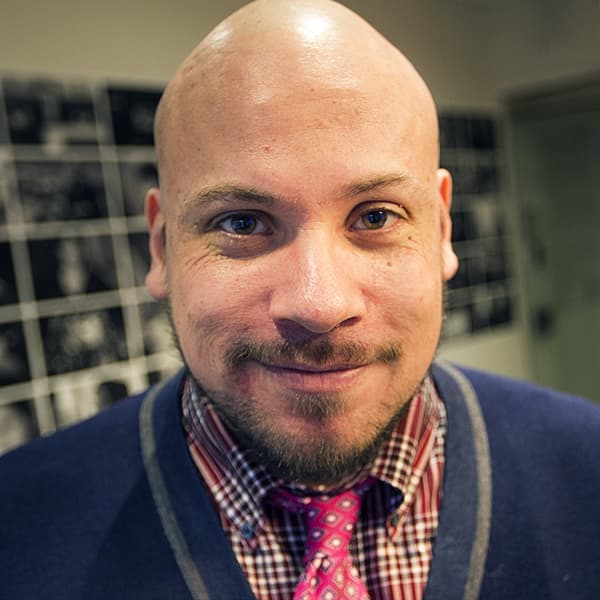Advertisement
Review
It's Fun, And Occasionally Intriguing, To Eavesdrop On Warhol And Capote At The A.R.T.
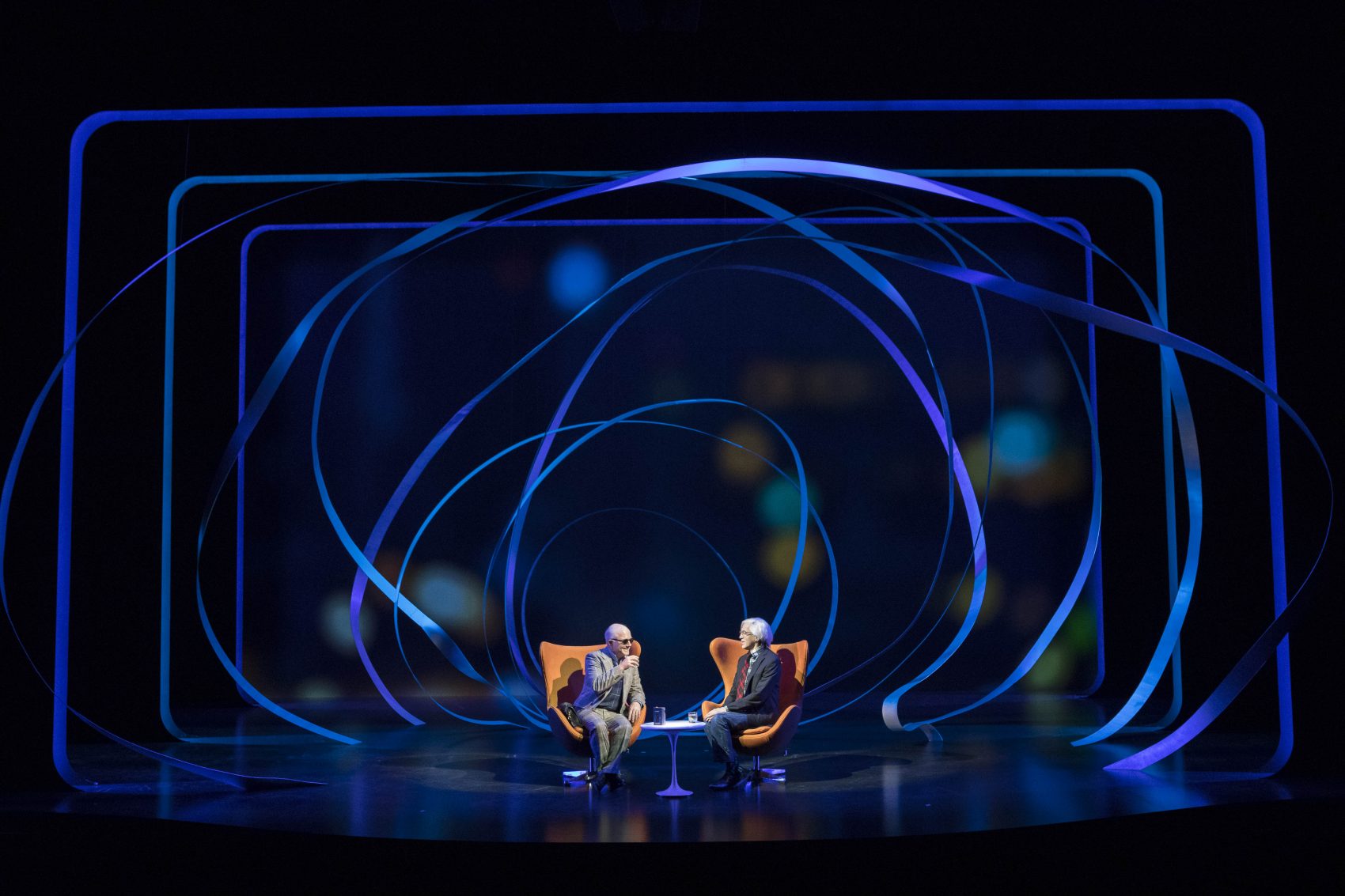
It can be fun to listen to famous people gossip about other famous people. And when those who are gossiping are famous because they’re accomplished artists and really smart, the rewards of eavesdropping are even better.
Take “WARHOLCAPOTE,” the amiable and occasionally thought-provoking new play assembled mostly from verbatim transcripts of its two namesakes in conversation. The items of interest here aren’t just who in these men's overlapping circles of friends is cheating on whom — or what Humphrey Bogart looked like with his pants off, which is indeed covered — but observations about the nature of celebrity and of the creative process.
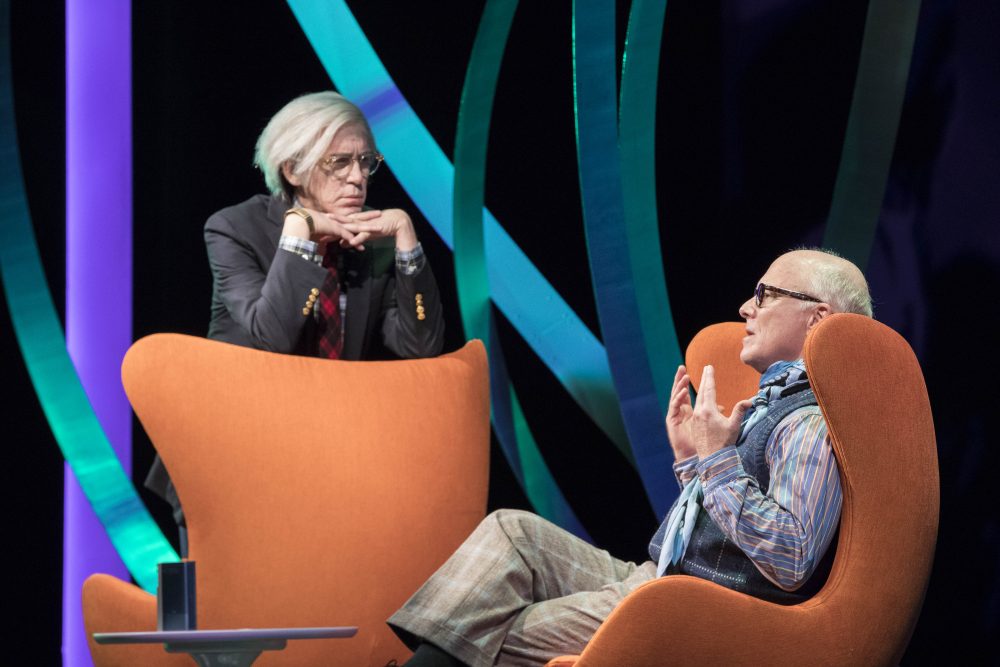
It’s during a chance meeting at Studio 54, as presented in the play (now making its world premiere at American Repertory Theater), that Warhol and Capote make plans to collaborate. Warhol suggests that they write eight plays to run on Broadway simultaneously. He wants them to be situational comedies, but Capote insists that comedies wouldn’t be big enough hits. It’s fun to suppose that “WARHOLCAPOTE” is the realization of their unfinished project, but this is true — according to the onstage evidence — only in the sense that they talked about collaborating on a play that one time at a disco.
But this nugget is the sort of thing that can spark the imagination of a theater person — in this case, adapter Rob Roth, who came upon a reference to plans for “the Broadway play” in the posthumously published “The Andy Warhol Diaries.”
So keep in mind that this is no unfinished symphony, finally recreated from draft versions. But it has a different value, particularly for diehard fans of its two central personalities. Roth sniffed out the existence of hours and hours of previously unheard tape recordings that Warhol made in the last decade or so of his life. As we hear in the play, he referred to the hand-held recorder as his wife, recording conversations with friends and associates while making the occasional note about the cost of cab rides.
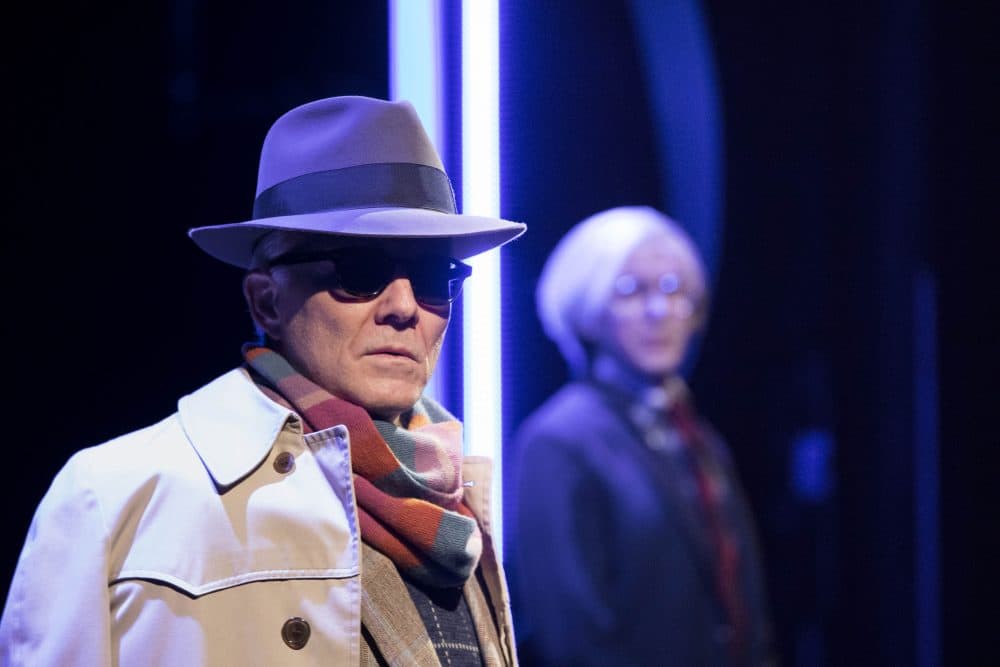
Fearing the publication of anything slanderous enough to provoke litigation, the Andy Warhol Foundation determined it would keep the tapes sealed until 50 years after Warhol’s death. Offering indemnity against lawsuits that may result (and, according to The New York Times, full script approval), Roth pried loose access to those among the 3,000 surviving tapes that featured conversations with Capote. "WARHOLCAPOTE" is the result of 10 years of sleuthing and puzzle-fitting, as Roth assembled bits and pieces of the verbatim transcripts (plus some supplementary material) into five imagined conversations.
The project overcame another hurdle in the form of the departure of one of its stars just three days before the first preview performance. (The A.R.T. cited “unforeseen personal circumstances” as the cause for the departure of Leslie Jordan who was set to play Capote.) But I challenge you to watch this performance and try to guess which of the two actors was the last-minute fill-in. Dan Butler seems very much at home in the skin of the author of “In True Blood” and “Breakfast At Tiffany’s.” And as Warhol, two-time Tony Award-winner Stephen Spinella is a likable and gracious host.
Advertisement

Warhol is revealed here to be a truly gifted interviewer, evincing what seems like a boundless curiosity as he prompts Capote to hold forth by asking simple questions. (Warhol gets miles and miles from queries like: “Really?”) The through-line here is the two’s evolving friendship. As a 20-year-old newcomer to New York, Warhol wrote fan letters to Capote, who was later a subject of his first solo show in the city — “Fifteen Drawings based On the Writings of Truman Capote,” in 1952. Warhol’s adulation was apparently a bit too intense, and their friendship paused for a few decades while the artist established himself as a cultural force of his own sort, finally able to approach Capote from a similar social perch.
“WARHOLCAPOTE” is particularly interesting in the early going, when the two talk about the influence of fame and the distorting effects of mass media. When he tape-records people who are dealing with a problem, Warhol says, there is a split between reality and its recorded depiction. The substance of people’s lives become a sort of art object, and it is unclear if they are being themselves or simply performing for the benefit of the tape. There are plenty of resonances with today’s social media culture and, of course, a self-referential view of the play itself. Are Warhol and Capote truly being themselves here, or performing for the tape?
There’s rich fodder in this source material for a play focusing on that aspect, playing off the fact that both Warhol and Capote possessed public personae that could be seen as affected, or at the least, carefully considered. It must be a true riddle for an actor to play such a person, creating a character for the stage who is fully formed and not a caricature. (It helps that costume designer Clint Ramos outfits Butler in Capote’s signature fedora only at the top of the show.) But director Michael Mayer keeps things grounded, if perhaps limited.
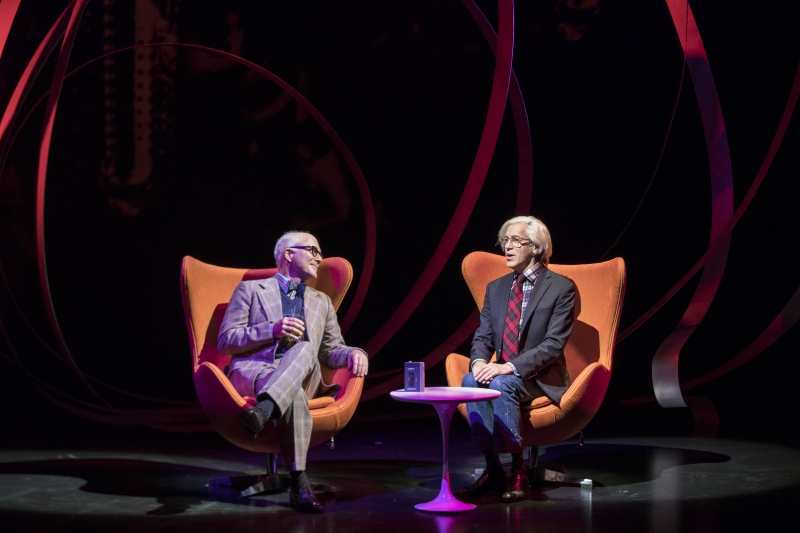
Butler has more emotional ground to traverse of the two actors, as Capote goes from bouncy nightclub patron, to sober philosophizer, to a man seemingly addled by an overactive mind and alcohol addiction. Though his subject could be tart, Butler remains likable. In Spinella’s hands, Warhol seems careful and humble, without the cool, calculating affect that is sometimes present in onscreen depictions of him. His self-deprecation feels honest, and he’s a fountain of insightful observations and potently simple aphorisms delivered with real empathy. Mayer does well to let his actors explore the rhythms of these conversations patiently, letting each tête-à-tête feel like a self-contained world.
A heavier directorial hand might have made more of the Mobius strip factor of famous artists talking about the effect of fame on art, in the course of a play based on tape recordings that muses on the distorting element of mechanically enhanced self-consciousness. The interplay of reality, such as it can be understood, and art based on that reality is central to the work of both Warhol and Capote.
But beyond the central conceit that brought it into existence, this is a low-concept production. It’s mainly a chance for fans of Warhol and Capote to travel past the velvet rope and get a sense of the men as chummy co-conspirators. As fly-on-the-wall perches go, it’s a good one.
"WARHOLCAPOTE" is onstage at American Repertory Theater through Oct. 13.
